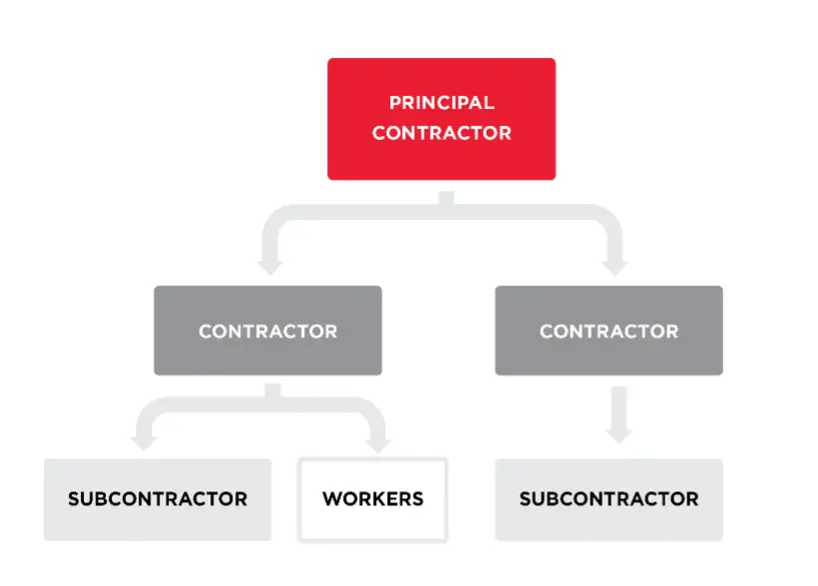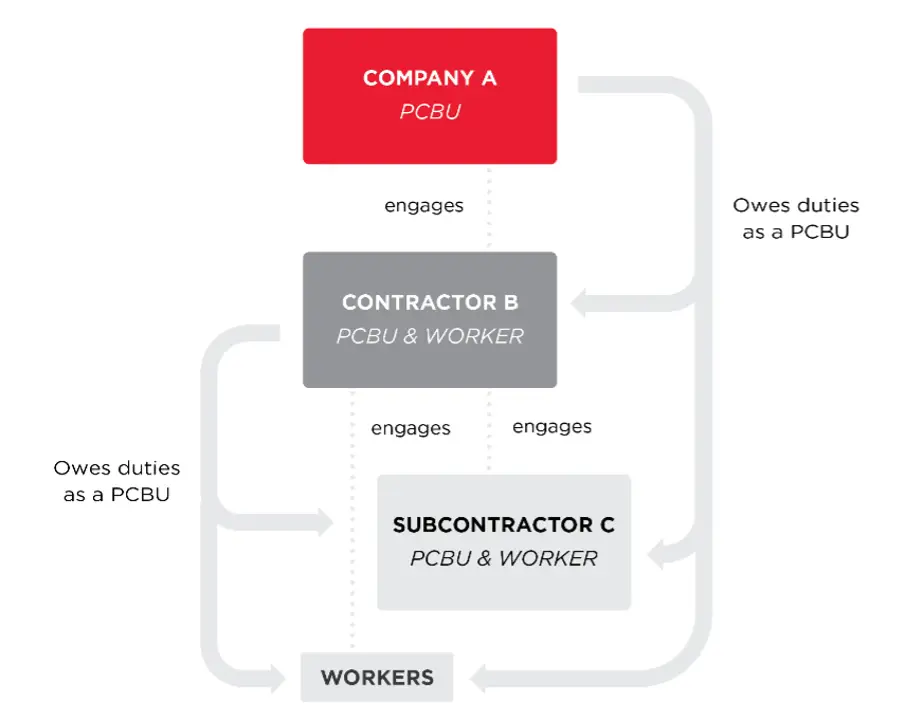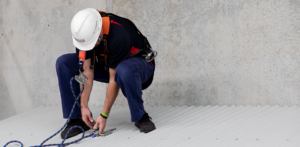The relationship between principal contractors, contractors, sub-contractors, and workers can create complexity in who is responsible for workplace safety.
The nature of workplace health and safety laws in Australia can often create ambiguity around who has responsibility for different aspects of creating safety in the workplace. In this blog post, we will explain what a contractual chain is and how it works alongside workplace health and safety laws.
The complexity occurs as there can be more than one person conducting a business or undertaking (PCBU) when work is being completed in a contractual chain. This means that workplace health and safety duties can be shared.
However, it is important to remember that duties cannot be contracted out. Meaning you cannot simply say that because you gave a job to a third party, it is solely their responsibility to ensure compliance with all relevant WHS laws.
What is a contractual chain?
A contractual chain exists when there are multiple contractors and subcontractors engaged in the delivery of a single project. What this can look like can be as variable as the different types of work there is out there.
For example, a government principal contractor may engage a Tier One civil contractor to deliver an infrastructure project. That civil contractor would then engage an earthworks company as a subcontractor to complete bulk earthworks on the site.

Another could be a property owner (principal contractor) engaging a facilities management firm (contractor) to oversee the ongoing maintenance of their buildings. That facility manager would subcontract a cleaning service company to undertake cleaning of the buildings. Those cleaners may then engage a facade cleaner subcontractor to complete cleaning of the external facade of the buildings as this is specialist work that requires specific skills the cleaning subcontractor does not have.
In both these examples, there is shared responsibility for ensuring workplace safety on every party to the contractual chain.
Duties under WHS laws
Under workplace health and safety laws, the person responsible for ensuring work is completed safely is the person conducting a business or undertaking (PCBU). The PCBU is required to ensure that all reasonably practicable steps are taken to mitigate the risks of injury occurring as the result of an accident as a consequence of the performance of their responsibilities under the contract.
The exact definition of a PCBU and what is reasonably practical is defined in the Work Health and Safety Act (Commonwealth) 2011.
On a worksite where the project is being completed involving a contractual chain, there can be several levels of PCBU, where each owe different aspects of work health and safety duties to each other, as well as the workers on the site.
It would be the responsibility of the principal contractor to ensure that a safety system was present on the worksite to facilitate safe work in a high-risk location. For example, they would need to install a fall protection system in areas where a worker was at risk of a fall like on a roof or edge to a void.
It would be the responsibility of the contractor to ensure they implemented safe methods of completing the work, utilising the fall protection and height safety systems provided correctly when completing their work.
For workers, they are required to have the skills and experience to be competent in following the safe work method and using the safety equipment needed to carry out their work.
At each stage, the various PCBUs are responsible for their own aspect of workplace safety. This responsibility is not handed off simply because there is another link in the chain.
In a nutshell – the principal contractor us required to provide a safe place of work. Each contractor and subcontractor is required to provide a safe system of work.

Communication is key
No matter your role within the contractual chain, or the duties you hold regarding workplace safety, it is vital that communication be always open and honest.
Every level of the contractual chain is required to always maintain clear lines of communication about safety issues. Ensuring that everyone involved in the job understands what risks exist and the mitigations in place to reduce their likelihood of occurring and severity of any incident.
All communication should take into consideration that Australia is a multi-cultural society, where it cannot be assumed that English is everyone’s only language, or that everyone has the same language skills.
Cultural and linguistic diversity must be front and centre when developing communication plans, especially when it comes to workplace safety. It is critically important that everyone on a job site has a comprehensive understanding of the risks that are present and what steps are to be taken to mitigate those risks.
Why WHS duties in contractual chains are important
Contractual chains are important as they allow large projects to be completed using expertise from specialists to complete specific parts of the job, where specific skills may be required.
To keep workplaces safe, it is vital that each link in the contractual chain understands what their responsibilities are.
Principal contractors are to provide a safe place of work, while contractors and subcontractors are responsible for having safe methods of work, while workers have the responsibility to be competent in the tasks they are performing. A safe workplace is one where each link can trust the other is doing what is required of them.
This attitude was summed up in 1871 in Daniel v. Directors, & of Metropolitan Railway Co. In the judgement, His Honour wrote:
“…the ordinary business of life could not go on if we had not a right to rely upon things being properly done when we have committed and entrusted them to persons whose duty it is to do things of that nature, and who are selected for the purpose with prudence and care, as being experienced in the matter, and are held responsible for the execution of the work.”
Partners in protecting people
No matter your role within a contractual chain, Height Safety Engineers are your partners in protecting people. Discuss your height safety, fall protection or training needs with our expert team by calling 1300 884 978 or email enquiries@heightsafety.net.





